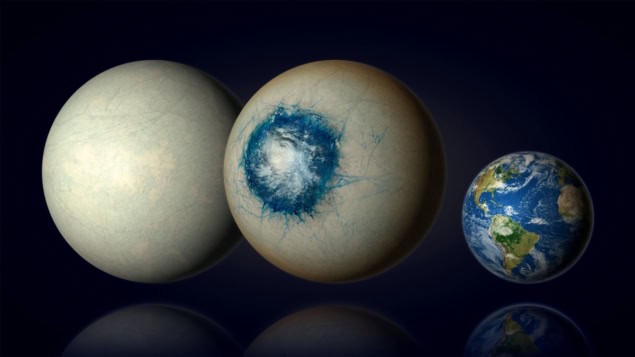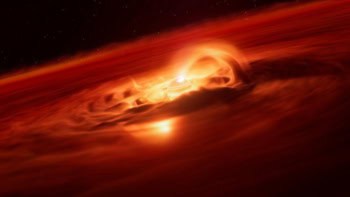
A research team headed up at the University of Montreal has discovered that the temperate exoplanet LHS 1140 b may have an atmosphere, could be covered in ice, and may even have an ocean of liquid water. If confirmed, this would make it only the third known planet in its host star’s habitable zone to have an atmosphere, after Earth and Mars.
Profound implications
LHS 1140 b, discovered in 2017, is a highly studied exoplanet with observations obtained by several telescopes, including the Transiting Exoplanet Survey Satellite (TESS), the Hubble Space Telescope, the Spitzer Space Telescope and the ESPRESSO spectrograph on the ESO/Very Large Telescope.
Earlier this year, the Montreal-led team reanalysed existing observations to update and refine a range of parameters, including the planet’s radius and mass. The researchers found that its density is inconsistent with a purely Earth-like rocky interior, suggesting the presence of a hydrogen envelope or a water layer atop a rocky, metal-rich core.
They then embarked on a further study of the nature of the exoplanet with the NIRISS (near-infrared imager and slitless spectrograph) instrument on the James Webb Space Telescope (JWST), aiming to distinguish between the “mini-Neptune” or “water world” scenarios.
Presenting the results in The Astrophysical Journal Letters, the astronomers describe how they studied the atmosphere of LHS 1140 b using the transmission spectroscopy technique, which involves observing a planet as it transits in front of its host star.
“Our findings indicate that LHS 1140 b’s atmosphere is not dominated by hydrogen, with the most likely scenario being a nitrogen-rich atmosphere consistent with the water world hypothesis,” says lead author Charles Cadieux, a PhD student at the University of Montreal’s Trottier Institute for Research on Exoplanets, supervised by René Doyon.

“By collecting this light at different wavelengths using a spectrograph – in this case, the NIRISS instrument on JWST – we can infer the atmospheric composition. Molecules such as H2O, CH4 [methane], CO, CO2 and NH3 [ammonia] all absorb light at specific wavelengths, allowing us to identify their presence, or absence,” Cadieux explains.
“Looking at the whole exoplanet population, no atmosphere on a rocky, terrestrial exoplanet has yet been detected to date, this is hard. Our tentative result of a nitrogen-rich atmosphere on LHS 1140 b, if firmly confirmed by additional observations, would be the first such detection,” he adds.
Cadieux notes that this discovery would place LHS 1140 b as only the third known planet with an atmosphere in the habitable zone of its host star, alongside Earth and Mars, confirming that the implications for future research are “profound” and “would provide a target for studying the habitability and the potential for life to exist on rocky, water-rich exoplanets around low-mass stars”.
Super-Earth
According to Cadieux, the next step is to repeat the observations with JWST to confirm the tentative detection of a nitrogen-rich atmosphere. While the current observations use the NIRISS instrument, the team also plans to use the NIRSpec (near infrared spectrograph) instrument on JWST, which extends further into the infrared and can probe the CO2 content of the atmosphere.

JWST data reveal interior structure of puffy exoplanet
Understanding the CO2 content is crucial, as CO2’s greenhouse effect controls surface temperature and the potential size of a liquid water ocean on LHS 1140 b. Cadieux notes that clear detection of CO2 will require two to three years of observations with JWST and should provide definitive proof that LHS 1140 b is a super-Earth with a significant water reservoir.
One key challenge, besides securing JWST observation time, will be addressing stellar contamination in the transmission data. “Since LHS 1140 b orbits a smaller and cooler M-type star, stellar spots on the star’s surface can form molecules like water, which can be misinterpreted as a planetary signal,” Cadieux explains. “Even with additional data in the future, we must carefully correct for stellar contamination to ensure accurate results.”



